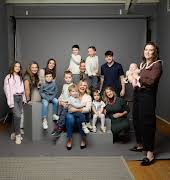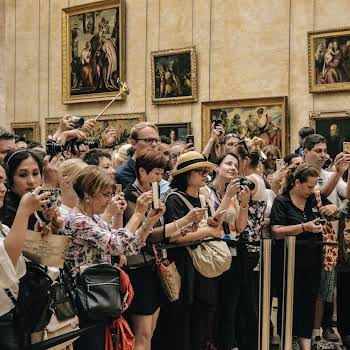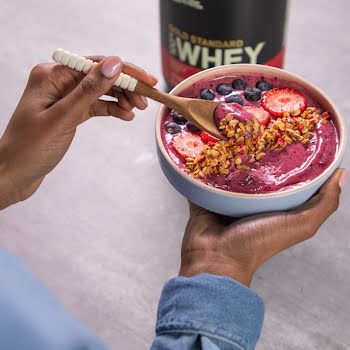
By Niamh Ennis
07th Aug 2020
07th Aug 2020
We need to use both our heads and our hearts when making a decision, writes Niamh Ennis
Decision making is hard. Having to decide between one thing and another can result in a painstaking process.
Often described as a battle between the head and the heart, nothing about it is simple. Yet I believe the challenge lies when we are making decisions entirely from our head.
When the heart comes into play things get a little easier.
When we make decisions from our head – we engage our mind, our brains. We rely heavily on logic and use several reference points, most notably, previous experience.
We think back to a time where we had to make a similar decision or a choice. We try to recall what our options were then, what decision we made and what the outcome was. If the outcome didn’t resemble a disaster then the chances are, we will consciously, or otherwise, be led in the direction of repeating the decision and most likely (fingers crossed) it will work out okay.
Interestingly, we tend to spend longer and place more import on the decisions we make at work than we do in our personal lives. I wonder is this because we feel we are more exposed there or is it (which I believe is most likely) because we think that in terms of priorities we belong further down the list.
Like most things, we can find a graphic somewhere that purports to tell us more. This one was created by The University of Massachusetts Dartmouth, USA and takes us on the decision-making journey. On this grapy they inform us that there are seven steps to effective decision making which are:
Identify the decision, gather information, identify alternatives, weigh the evidence, choose among the alternatives, take action and finally review your decision.
Now, I don’t mean to sound like I’m sneering at these, but are these not glaringly obvious and what we would all do automatically without thinking?
And just because they state them doesn’t make them true.
Nor does it say that there aren’t other even more effective means to reach a decision.
Heart over head
To my mind, Glennon Doyle in her latest No 1 New York Times bestseller Untamed reflects my thinking on the most effective way to reach a decision. In her writings, Doyle often refers to something circulating inside her which she describes perfectly as a knowing.
When she poses a question about her life, when she is searching for an answer to a decision, she simply waits for that knowing, that gentle nudge which will guide her towards the next right thing. She describes that knowing as feeling like ‘warm liquid gold filling my veins and solidifying just enough to make me feel steady, certain’.
What I love about her description, is not just the ethereal feeling of tuning into our deep intuition for answers, but the full acceptance that we can only find our true answers when we look inward. To me, that’s most powerful.
This goes against our conditioning and everything we have been taught about the decision-making process. We have been told to look outward for validation, agreement, approval and subsequently for permission.
Yet when we go inward, when we silence the voices around us, lean in to how each alternative makes us feel and then finally learn to trust this feeling, this knowing, then our truth appears.
Our truth.
Nobody else’s.
If we are willing to do this, to sit in the silence and listen, then we will always know what to do. The truth is this.
The answers are NEVER out there, in someone else’s opinion, in someone else’s words of wisdom about what’s best for us, the answers are always within us, inside of us and part of us. They are us before we recognise them.
Which may sound all good and lovely, but on a practical level, how does it actually work? Well, I’ve been engaging in this decision-making process for quite a while and have found it to be reliable and rewarding. But it does require consistency. You must commit to this process wholly and never doubt its merits again.
I lived in my head for the vast majority of my life. I worked on the basis that the more information I had before making a decision the better the decision was. Wrong.
I believed that by listing out the reasons for and against, doing research on both sides, I was covering all eventualities. Wrong.
I acquired as much expert advice, chased professional opinions and sought out experienced voices to confirm my thinking. Wrong.
I committed to the belief that to be forewarned was to be forearmed and that this made me bullet proof. Wrong again.
So how do I do it? How do I decide?
At work, in my personal life, the process remains the same. It is this process that started helping me turn my life around, to change it beyond recognition a little over six years ago. I just didn’t have the language to describe it back then.
My decision-making process is simpler now than ever. It is based on two alternatives – warm and cold. Yes, it really is that simple.
- I gather some information before I whittle my decision down to two final outcomes.
- I trust that my body will tell me things that my mind won’t. I ask questions of myself.
How does option A make me feel?
How would not having option A make me feel?
I do the same with option B.
- I let the answers come, in silence. I listen, in silence. I trust that feeling. Then I go for the one that feels warm in my body. I trust this feeling of warmth. I’ve learned to really trust this feeling. I’ve learned to trust myself and this is where my magic happens.
You have to teach yourself to trust yourself and this comes with repeating the exercise over and over. The consistent repetition reinforces your trust and it helps you to differentiate that feeling of warmth and cold in your body. That’s what your KNOWING feels like.
Once you master that, trust me, making decisions will never be the same again. But of course you need to discover that all for yourself!
Niamh Ennis is Ireland’s leading Change & Transformation specialist and founder of the RESET for Change Programme.
She works with women who feel stuck, unable to move their lives forward and who finally want to commit to doing things differently.
To work with her on your own bespoke private coaching programme just click here or visit www.niamhennis.com
Niamh is a speaker at our free ‘Making It Happen‘ event on August 13.
Feature image: Pexels
Read more: Stuck in a career rut? Our expert-led panel can help. Join our free IMAGE x Springboard+ virtual event
Read more: Niamh Ennis: Is the fear of seeming selfish holding you back?
Read more: 8 powerful questions that will help you find your purpose























